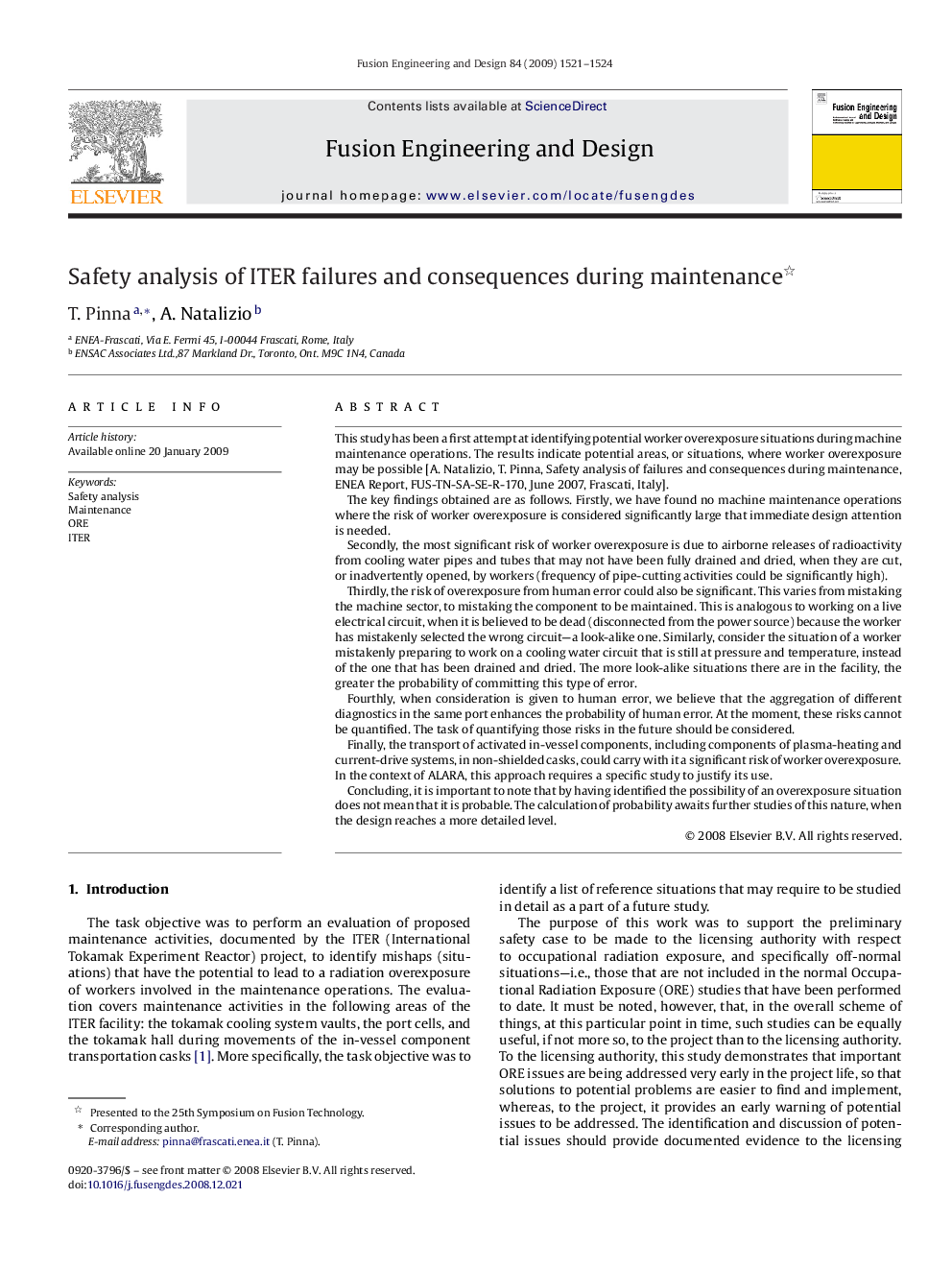| کد مقاله | کد نشریه | سال انتشار | مقاله انگلیسی | نسخه تمام متن |
|---|---|---|---|---|
| 273183 | 505039 | 2009 | 4 صفحه PDF | دانلود رایگان |

This study has been a first attempt at identifying potential worker overexposure situations during machine maintenance operations. The results indicate potential areas, or situations, where worker overexposure may be possible [A. Natalizio, T. Pinna, Safety analysis of failures and consequences during maintenance, ENEA Report, FUS-TN-SA-SE-R-170, June 2007, Frascati, Italy].The key findings obtained are as follows. Firstly, we have found no machine maintenance operations where the risk of worker overexposure is considered significantly large that immediate design attention is needed.Secondly, the most significant risk of worker overexposure is due to airborne releases of radioactivity from cooling water pipes and tubes that may not have been fully drained and dried, when they are cut, or inadvertently opened, by workers (frequency of pipe-cutting activities could be significantly high).Thirdly, the risk of overexposure from human error could also be significant. This varies from mistaking the machine sector, to mistaking the component to be maintained. This is analogous to working on a live electrical circuit, when it is believed to be dead (disconnected from the power source) because the worker has mistakenly selected the wrong circuit—a look-alike one. Similarly, consider the situation of a worker mistakenly preparing to work on a cooling water circuit that is still at pressure and temperature, instead of the one that has been drained and dried. The more look-alike situations there are in the facility, the greater the probability of committing this type of error.Fourthly, when consideration is given to human error, we believe that the aggregation of different diagnostics in the same port enhances the probability of human error. At the moment, these risks cannot be quantified. The task of quantifying those risks in the future should be considered.Finally, the transport of activated in-vessel components, including components of plasma-heating and current-drive systems, in non-shielded casks, could carry with it a significant risk of worker overexposure. In the context of ALARA, this approach requires a specific study to justify its use.Concluding, it is important to note that by having identified the possibility of an overexposure situation does not mean that it is probable. The calculation of probability awaits further studies of this nature, when the design reaches a more detailed level.
Journal: Fusion Engineering and Design - Volume 84, Issues 7–11, June 2009, Pages 1521–1524